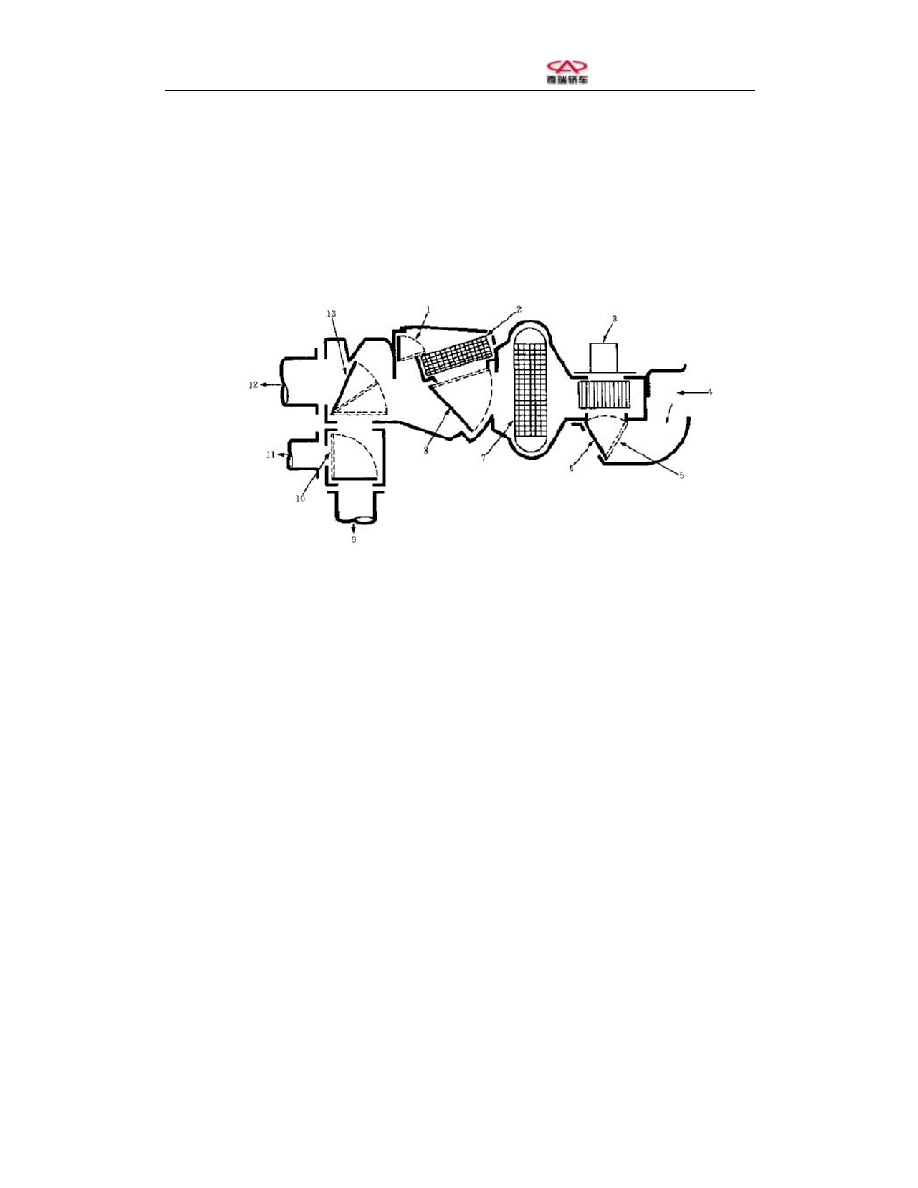Chery B11. Manual - part 121

Chery B11 Service Manual
Air Conditioner-7
Section 4 Windshield Location
3.0.9: CHERY AUTO CASE/AIR PIPE SYSTEM
The separate type casing system with a blower
1—Choke 2—Heater core 3—Blower motor 4—Fresh air
5—Fresh/Recirculation air damper 6—Recirculation air 7—Evaporator core
8—Mixed air damper 9—To panel 10—A/C defroster damper 11—To
defroster 12—To the bottom outlet 13—Heater defroster damper